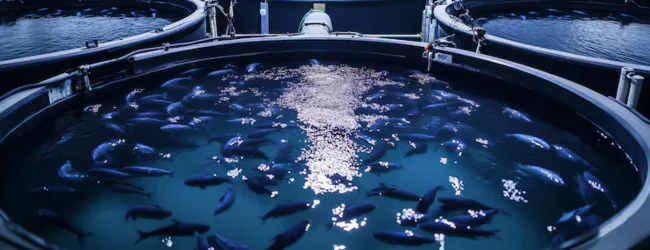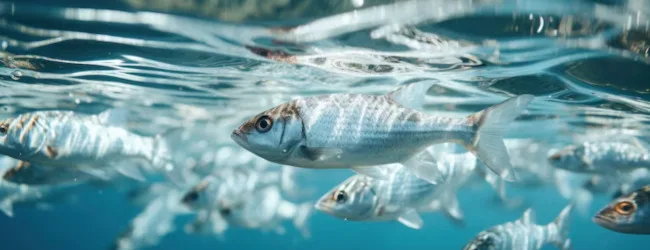Table of contents
- What is Biofloc Fish Farming?
- How Biofloc Technology Works
- Advantages of Biofloc Farming
- Step-by-Step Setup Guide
- Investment Required in India
- Profit Margin & Income Potential
- Best Fish Species for Biofloc
- Marketing & By-Product Opportunities
- Real-Life Success Stories
- Conclusion
- Frequently Asked Questions (FAQs)
Biofloc fish farming is an innovative and sustainable technique transforming the aquaculture sector in India. By recycling waste and minimising water use, biofloc systems allow fish to thrive even in limited space, making it a popular option for farmers with small land holdings or budget constraints. Whether you’re a beginner or a seasoned farmer looking to diversify, this method could bring high returns with low investment.
What is Biofloc Fish Farming?

Biofloc fish farming is a technique where beneficial microorganisms convert fish waste into protein-rich feed, reducing the need for water exchange and additional feed. It allows intensive fish production in limited space with high biosecurity.
Key Terms Explained:
- Biofloc: A mixture of bacteria, algae, fungi, and leftover feed that floats in the tank.
- Aeration: The process of supplying oxygen using air pumps.
- C/N Ratio: Carbon to nitrogen ratio, critical for maintaining a healthy biofloc system.
How Biofloc Technology Works
- Fish produce ammonia as waste.
- Adding carbon sources like jaggery balances the C/N ratio.
- Microbes consume ammonia and convert it into microbial protein.
- This “floc” becomes additional food for the fish.
Advantages of Biofloc Farming
✔ Low Water Usage: Reuses the same water, saving up to 90% compared to traditional ponds.
✔ Reduces Feed Cost: Biofloc acts as a supplementary feed.
✔ High Stocking Density: More fish can be raised in smaller space.
✔ Eco-Friendly: Converts waste into useful biomass, reducing pollution.
✔ Low Disease Risk: Controlled environment reduces infections.
💡 Pro Tip: If you want to start a Business but have too many doubts, connect with a Business expert from Boss Wallah for guidance – Check Out
Step-by-Step Setup Guide
A. Location & Space
- Backyard, rooftop, or small plot (minimum 500 sq ft)
B. Materials Required
| Item | Quantity | Cost (Approx.) |
|---|---|---|
| HDPE Tank (10,000 L) | 1 | ₹12,000 – ₹15,000 |
| Aeration Kit (Blower, Pipes) | 1 set | ₹8,000 – ₹10,000 |
| Water Testing Kit | 1 | ₹1,500 |
| Carbon Source (Jaggery/molasses) | Monthly | ₹500 – ₹800 |
| Fish Seed (Tilapia/Catla) | 1,000 nos | ₹2,000 – ₹5,000 |
| Others (Netting, Buckets, Misc.) | — | ₹3,000 |
➡ Total Setup Cost (Per Tank): ₹25,000 – ₹35,000
Investment Required in India
Small Scale (1-2 Tanks)
- Total Investment: ₹35,000 to ₹70,000
- Monthly Operating Cost: ₹5,000 – ₹8,000
Medium Scale (5 Tanks)
- Total Investment: ₹1.5 to ₹2.5 Lakh
- Monthly Operating Cost: ₹20,000 – ₹30,000
Tip: Many state governments offer subsidies under Blue Revolution and PMMSY (Pradhan Mantri Matsya Sampada Yojana).
Profit Margin & Income Potential
Example: 1-Tank Business (6-Month Cycle)
| Parameter | Value |
|---|---|
| Fish Stocked | 1,000 |
| Survival Rate | 90% |
| Avg. Fish Weight | 700g |
| Selling Price | ₹120/kg |
| Gross Income | ₹75,000 – ₹80,000 |
| Net Profit (After Cost) | ₹30,000 – ₹40,000/tank |
Expected ROI: 6–8 months
ALSO READ | Step-by-Step Guide to Starting a Successful Fish or Chicken Retailing Business in India
Best Fish Species for Biofloc

- Tilapia – Fast-growing, high demand
- Catla & Rohu – Popular Indian species
- Pangasius – High-density farming
- Common Carp
Avoid species that are sensitive to low oxygen or turbidity.
ALSO READ | 10 Best Fish Farming Loan Schemes for Farmers in India
Marketing & By-Product Opportunities
Main Revenue Sources
- Fresh Fish Sale (Local Market, Retail Chains)
- Live Fish Supply (Hotels, Restaurants)
- Fingerling Supply (If you produce your own)
By-Product Opportunities
- Biofloc Sludge: Can be dried and sold as organic fertiliser.
- Training & Consultation: Start your own local workshops.
Real-Life Success Stories
Case Study: Odisha Farmer Earns ₹10 Lakh/Year
A small farmer in Balasore, Odisha, started with 3 tanks and now operates 20 tanks. He sells fresh tilapia directly to the local market and earns ₹80,000–₹90,000 monthly.
Need Expert Guidance?
Starting a business can be challenging, but you don’t have to do it alone! At Boss Wallah, our 2,000+ business experts are ready to provide valuable insights and guidance. Whether you need help with marketing, finance, sourcing, or any other area of any business, our business experts are here to help you succeed
Confused about Which Business to Start?
Want to start your own business but unsure which one to choose? Explore Boss Wallah, where you’ll find 500+ courses by successful business owners, featuring practical, step-by-step guides on starting and growing various businesses.
Find your perfect business idea today
Conclusion
Biofloc fish farming is a game-changer for Indian farmers, especially those with limited resources. Its low investment, high profit potential, and sustainability make it an ideal business in 2025 and beyond. By mastering the basics, utilising government schemes, and marketing smartly, you can build a profitable aquaculture venture even from your backyard.
Frequently Asked Questions (FAQs)
1. What is the minimum investment in biofloc fish farming?
₹25,000 to ₹35,000 for a single tank setup.
2. Is biofloc suitable for beginners?
Yes, with proper training and care.
3. How much space is required for one tank?
Approx. 100–120 sq. ft.
4. Which is the best fish for biofloc farming?
Tilapia is highly recommended.
5. Can I start this on my terrace?
Yes, if the structure can support the tank’s weight.
6. How long does it take to earn a profit?
Typically within 6–8 months.
7. Are there any government subsidies?
Yes, under PMMSY and state-level fisheries schemes.
8. Is aeration compulsory?
Yes, 24/7 aeration is essential.
9. What is the ideal temperature range?
28°C to 32°C for most species.
10. Do I need a license?
Yes, you may require a local aquaculture permit.


